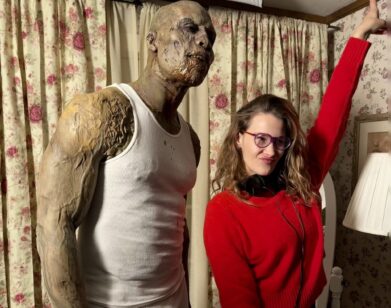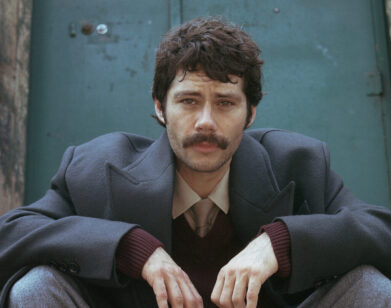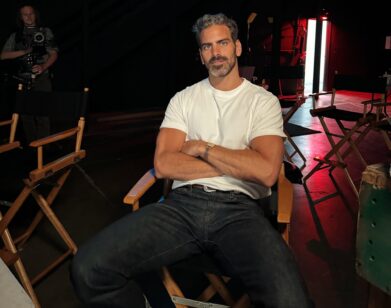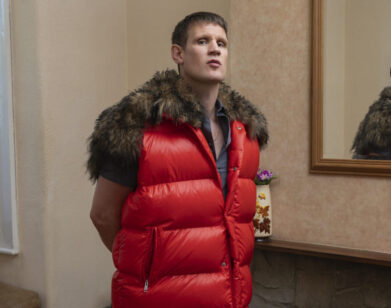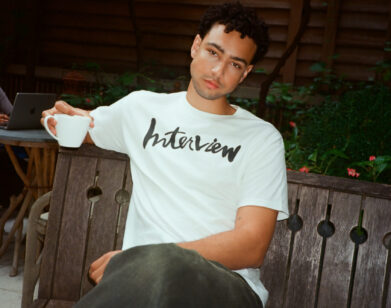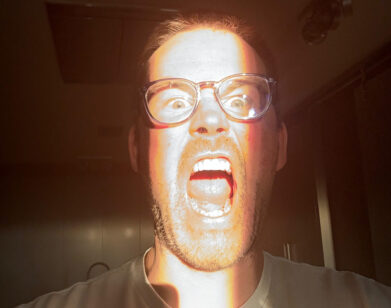Breaking News: Punk Documentary Tonight
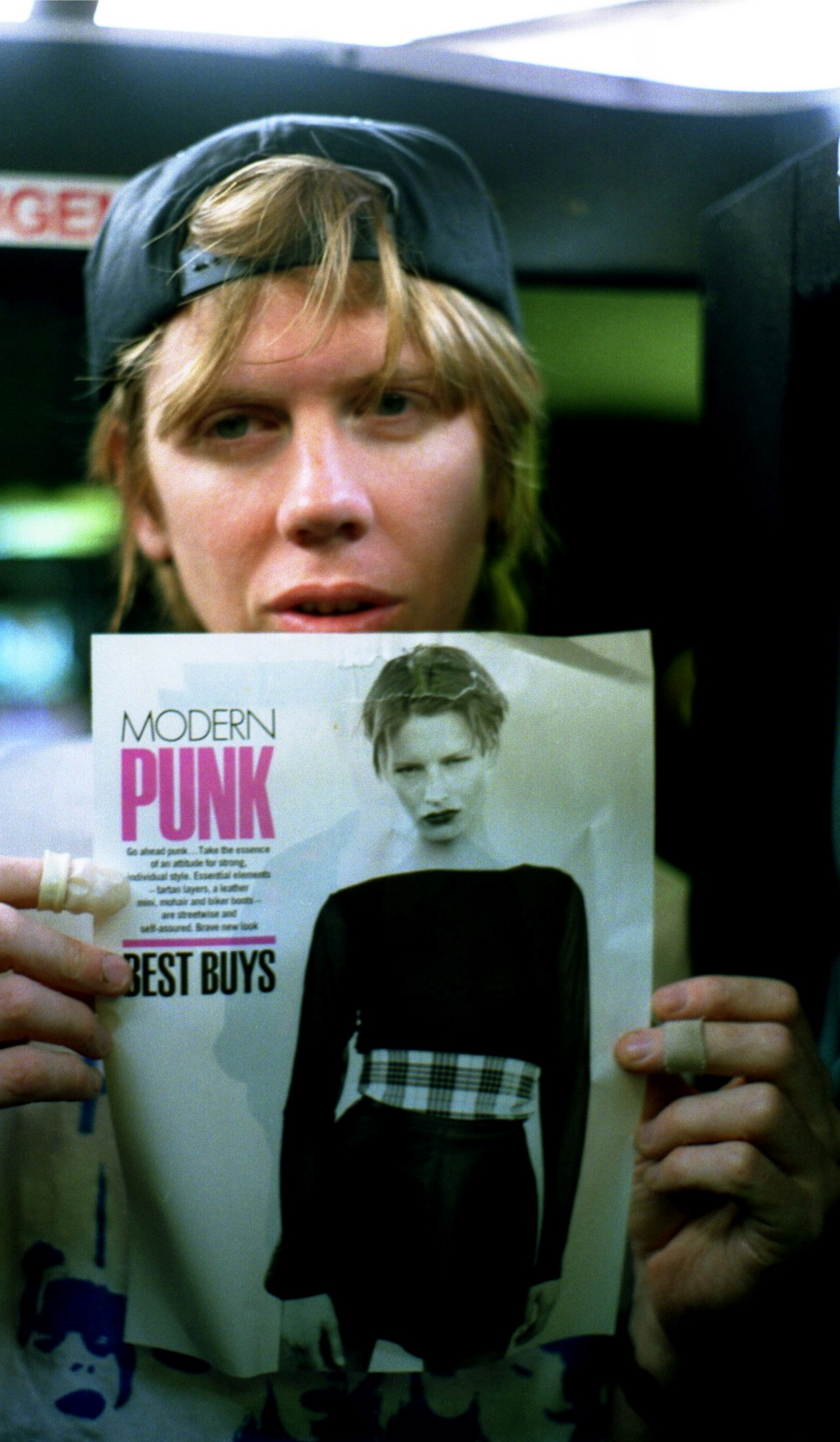
Film still
David Markey’s rock documentary 1991: The Year Punk Broke was originally commissioned as a diary by Sonic Youth’s Thurston Moore for a two-week European tour, but the film has since taken on a nostalgic life of its own for the intimate look it offers at the soon-to-be-legendary Nirvana, who opened the shows. “The title was an inside joke on the tour after I’d seen Motley Crue struggle through this cover of ‘Anarchy In The UK’,” says Markey. “It was just something I said, then Lee [Renaldo] said it, then Thurston, then it bounced around the stage. But it actually wasn’t until a couple of years later that punk really broke again with bands like Green Day and The Offspring.”
Shot on grainy Super 8 film, the footage shows Moore emceeing his way through Germany and Paris, mocking the language gaps between American bands and foreign music journalists, interviewing people on the streets, and giving the world its first glimpse into “Thurston-itis.” There are also performances by Dinosaur Jr., The Ramones, Babes In Toyland, and Nirvana, who happily played “Teen Spirit” to festival size crowds-before it became a contractual burden. One particularly poignant scene captures an innocent Cobain giggling backstage as Kim Gordon applies his eye shadow and lipstick before a show. Tonight, 15 years and one month after Cobain’s death, the Film Society of Lincoln Center hosts a special screening of 1991 so we called up Markey who talked about making the documentary, happier days, and where it all went.
MS: How did you originally get in touch with these bands to do the film?
DM:I was involved in a fanzine called We Got Power, and through that I made this documentary called The Slog Movie. It captured LA bands like Black Flag, The Circle Jerks, Wasted Youth. Thurston Moore got a copy of another doc I made called Desperate Teenage Lovedolls and gave a song for the sequel and I did a few short films with the band. At one point I was going to document the making of their major label debut, Goo. That fell through but at the very last minute before the ’91 tour they asked if I wanted to come along and document. Sonic Youth bankrolled it, a few thousand dollars was spent on Super 8 film and a plane was bought for me and off to Europe I went.
MS: It’s kind of weird when you look at the film because Kurt seemed so happy.
DM: At the time they were opening for Sonic Youth, and they were very happy to be there. Sonic Youth had helped them sign to Geffen, they had a really great relationship, and they felt really comfortable doing something insane like signing to a major label. I think the smiles you see on Cobain in that film were some of the last documented moments of that before everything changed, and they were thrust into the limelight and became this huge thing, which I don’t think anyone, let alone Cobain, was prepared for.
MS: How did Kurt generally behave on the tour? Was he communicative?
DM: He was quiet. What I remember about him during that time. I seem to remember more of my dealings with him after the film and things had changed for the guy. I think his drug habit got much more severe. I really had no idea at the time I was documenting this icon like Bob Marley or Sid Vicious. Nirvana was just this cool band.
MS: Did you ever have a feeling then how big they would become?
DM: No one knew. Big at that time meant you sold 50,000 copies and, yeah, I thought they would be big. But there was no idea of how big and what that meant. We were all used to independent labels and touring in vans. To me Sonic Youth was the pinnacle of success. Even though the film is ’91, it’s really the tail end of the 80’s. It’s just poised on the edge.
MS: The film has kind of become an internet sensation, but I kind of wish I had a DVD.
DM: Online it looks like crap. It’s funny that’s how a lot of the people are see it now. The original version looked very pretty grungy as it was, but it loses a lot of clarity when it’s compressed to an MP3 file. It still doesn’t make sense to me why it’s not out on DVD. Some day it will happen. It’s one of those freak occurrences, but the movie itself is one of those freak occurrences: this very small, shot on Super 8, film. I was a one-man crew. It has more in common with a film like Cocksuckers Blues than Woodstock.
MS: Aesthetically, the film has a lot to do with representing the music-with fast cuts and bleached out film.
DM: I used a lot of high-grain black and white film that was Triex and a film format called Four-ex that was nothing but grain. It’s a really pretty film format and sadly it’s long gone. I was used to making these hokey effects on the fly. I had to make a lot of editorial choices while shooting. We had a total of seven or eight hours of film, I think, which still amounted to a suitcase full of Super 8 cartridges. But managing that was very difficult. And I didn’t lose any of them, which I think is no small feat.
MS: Was the idea originally to have Thurston doing all these monologues?
DM: That also comes out of the short films I made prior to the film itself. I made this film in ’91, when Sonic Youth was opening for Neil Young on the Rag of Glory Tour I tagged along. There was this roadie Maurice, who was this hip-hop character, and we did this film on the spot and Thurston was the emcee. He basically carried that character into 1991. He was the glue because I didn’t really have time to prepare or even to conceptualize the film.
MS: What’s the book you’re working on right now?
DM: There’s a photo book coming out in spring of next year called Party With Me Punker, which compiles photos I took 30 years ago for my fanzine in the LA scene. That’s, funny enough, being edited by Thurston. It’s not going to be a typical punk rock photo book. There’s a lot about the atmosphere and the environment and just the streets and the place in time. It’s bands, kids, my peers, my friends, people hanging out at shows or Oki Dog or the LAPD busting up house parties with bands like Social Distortion playing to 20 people in a kitchen. It’s all very incestuous, still working with him all these years later.
MS: Kurt died 15 years ago, a month ago.
DM: Has it been 15 years? That’s the thing about time, the older you get the quicker it goes. I’m 45 now and it’s just amazing to me especially in the last 10 years, or from Kurt’s death on, time does not seem to be the same. It just goes faster and faster. American culture is very much like that as well. I don’t know where it all went, I really don’t.
1991: The Year Punk Broke plays tonight at the Film Society of Lincoln Center, at 8:15 PM.

